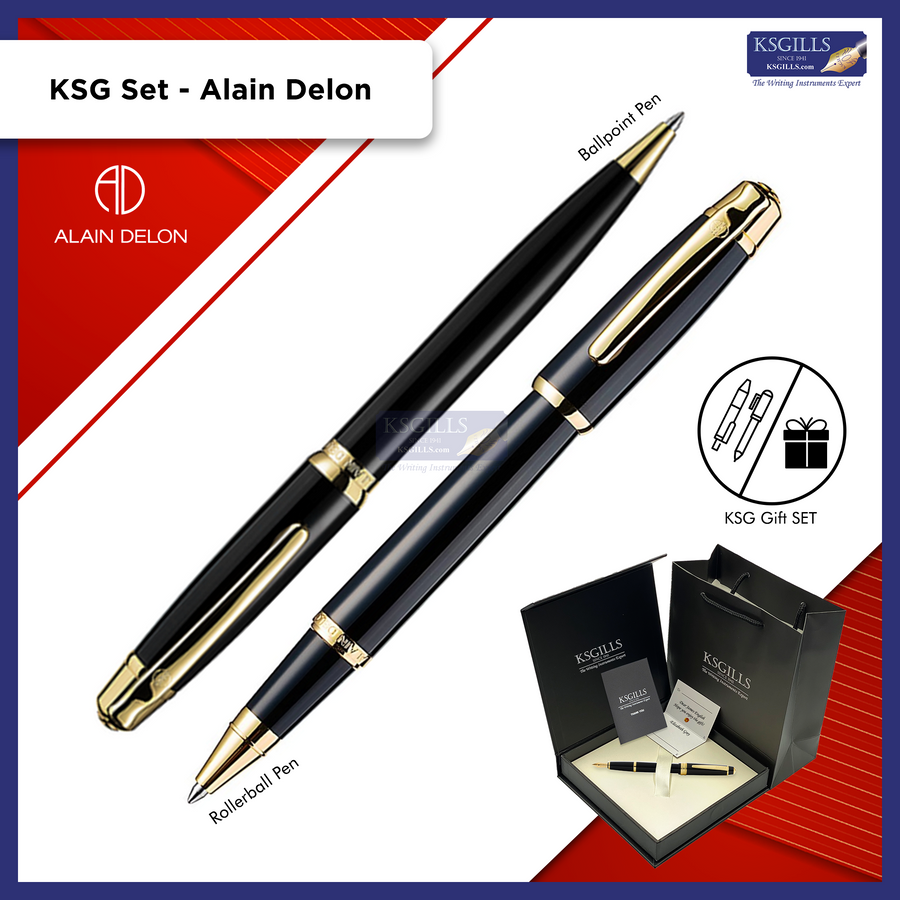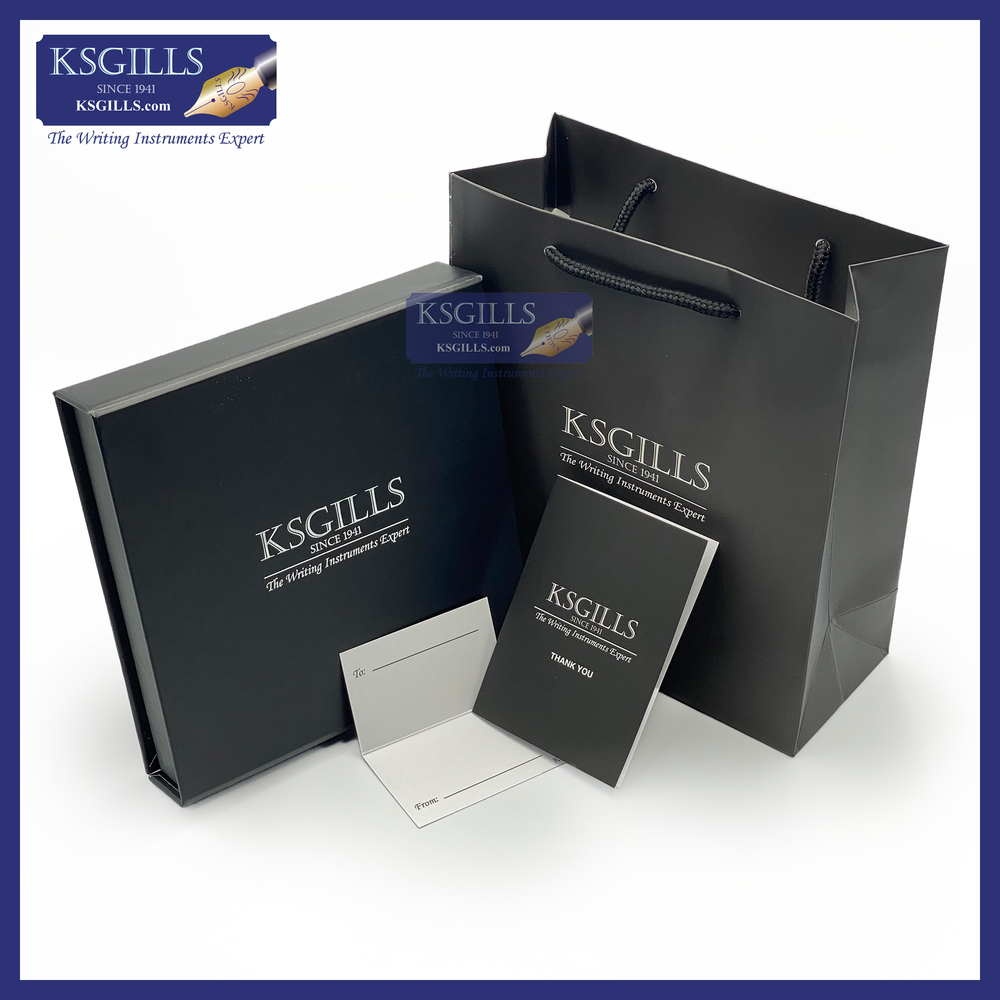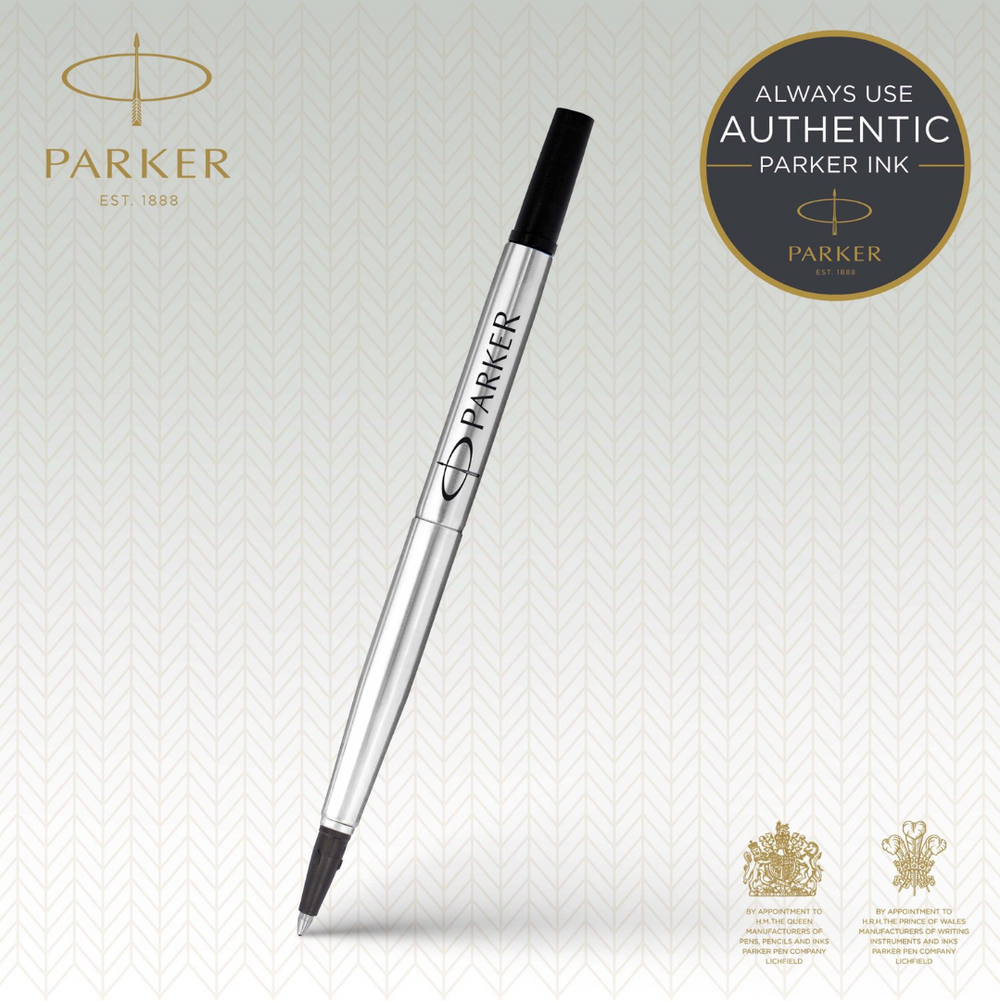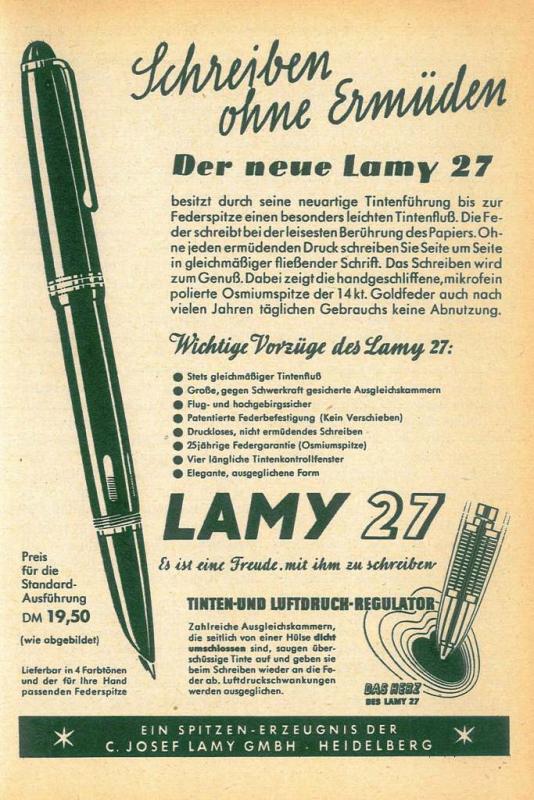The Poetry Of Pen And Ink
"You have to learn not to gesticulate when holding a fountain pen,” cautions Tomoko Sakomura, associate professor of art history, who once ruined a colleague’s shirt with splattered ink.
Chief among them, perhaps, was the late Ed Fuller, McCabe’s witty and erudite reference librarian. He was “centre stage on the College fountain-pen scene,” says Helene Shapiro, emeritus professor of mathematics. Fuller once described himself as carrying “the bulk of his wealth” in his jacket pocket, which contained multiple fountain pens, often with solid-gold nibs.
Decent starter fountain pens, however, can be had for the price of a good cup of coffee. Recently, there’s been a widespread resurgence of interest in the pens among all ages. Michael Cothren, an art history professor, first noticed them as a child in his school store; half a century later, future art history major Damien Ding ’18 learned about them online.
“Fountain pens are like people,” says Richard Binder, a nationally recognized nib meister, aka a master pen repairer. “Everyone has a unique personality.”
“It’s as if I’m divulging a part of myself through the writing,” says Alexandra Gueydan-Turek, associate professor of French and Francophone studies. “There is an individual quality to using fountain pens, as nibs are shaped by one’s particular handwriting.”
They can make lines of varying thicknesses, lending great personal character to one’s handwriting.
Sakomura agrees: “Though I am only one person, with fountain pens I can write in a range of styles.”
It is easy to write with fountain pens, which don’t require hand pressure with subsequent cramping the way a ballpoint can. Binder describes the fountain pen action as a “controlled leak.”
Ding says, “You just glide it across paper.” The pure physical pleasure of fountain pen use is a recurring theme among enthusiasts.
In addition to the loveliness of the lines they produce, fountain pens are also prized among users for their exquisite craftsmanship.
“I really love the beauty of the object,” says Cothren as he discusses his two handmade, natural-lacquered Japanese Nakaya pens.
Pens come in multiple shapes, colours, sizes, and materials; inks, too, offer countless options. Sakomura has a dark teal ink that, when dry, sparkles gold. Logan Grider, assistant professor of studio art and a self-described “materials geek,” has made a deep sepia ink from black walnuts collected on campus. Ding’s inks come in beautiful containers that he compares to perfume bottles.
History
“Some of the most interesting technology of the past two centuries has gone into the development of fountain pens,” says Binder.
They evolved from dip pens, which, as the name implies, demanded frequent, laborious dipping into a separate ink container. Fountain pens, with their own internal reservoir of water-based liquid ink, proved much quicker.
A combination of gravity and capillary action draws the ink through a feed, transferring it to the nib and thence to the paper. Many iterations of this basic system were improved over time, and during the course of the 19th century, multiple fountain-pen patents were established.
The actual pen components can be broken down into basic parts: the body (the barrel by which you grip the pen and which holds the ink reservoir), the ink-filling system (which varies from pen to pen), the feed (which connects the reservoir to the nib so that ink can pass from one to the other), and the nib (the writing tip of the pen).
The modern feed, patented in 1884 by Lewis Waterman, dramatically improved airflow and minimized blotting. By the first half of the 20th century, when fountain pens were in more general use, Mark Twain wrote about his Conklin Crescent Filler—so named for the crescent-shaped filling device that prevented it from rolling—for an ad: “I prefer it to ten other fountain pens, because it carries its filler in its own stomach, and I cannot mislay it even by art or intention. Also, I prefer it because it is a profanity saver; it cannot roll off the desk.”
The best-selling fountain pen in the U.S. in 1945, the Wahl-Eversharp Skyline, was created by celebrated American industrial designer Henry Dreyfuss; the pen bears a strong scaled-down resemblance to Dreyfuss’s streamlined Twentieth Century Limited locomotive design.
This was the first type of fountain pen owned by Scott Gilbert, emeritus professor of biology. Sakomura, too, has a collection of these particular vintage pens, each with a different kind of nib.
By the 1960s, disposable ballpoint pens—which used thicker quick-drying ink and worked at high altitudes—became very inexpensive, overtaking fountain pens for everyday writing in the United States. Fountain pens are still more commonly used by young students in Europe, and they are a popular gift in Japan, where some of the finest fountain pens are made.
Though their technology is older, fountain pens remain far more environmentally sustainable than ballpoints. A fountain pen can be continually repaired, lasting for years.
Writing
Users frequently mention the surprising joys of slowing down the writing process that the fountain pen imposes. Cothren speaks of the pleasure he derives from rewriting notes, saying “it’s a more reflective kind of writing,” a sentiment that Gueydan-Turek echoes. Additionally, Cothren feels that the need for “really slow looking and patience” when studying art is reinforced by the more measured writing process.
“You pay more attention to what you’re drawing,” agrees Grider. He uses a fountain pen for his study sketches preparatory to painting. In this sense, any handwriting could be viewed as a kind of drawing. Arabic script, which Gueydan-Turek writes with a fountain pen, is “commonly used as an art form,” she says, “in not only Islamic but also popular art.”
Writer Stephen King notes that composing his nearly 900-page book, Dreamcatcher, “with the world’s finest word processor, a Waterman cartridge fountain pen … put me in touch with the language as I haven’t been in years.”
Recent neuroscientific research reinforces this anecdotal evidence. Psychologists have reported that students learn better when they take notes by hand than when they type on a computer. One explanation is that writing by hand is slower. Since words cannot be transcribed verbatim as they can be on a keyboard, the student absorbs and reshapes them. In effect, they’re recreating ideas, requiring more mental energy and engaging more mental circuits.
There is also some evidence that learning cursive, as opposed to printing, can be helpful for certain kinds of dyslexia and can improve brain development in terms of language, thinking, and working memory. And fountain pens are particularly well suited to cursive writing.
As Canadian writer Josh Giesbrecht observed in The Atlantic, “Fountain pens want to connect letters. Ballpoint pens need to be convinced to write.”
Today
“The fellowship of users,” as Cothren calls it, continues to grow, with fountain pen sales rising in recent years. There are crowded fountain pen shows in cities around the world. The Philadelphia Pen Show is held every year in January. Attendees can take pens out for a “test write,” purchase new and antique pens, have their grips analyzed, and listen to—and share—fountain pen history.
Nibmeisters like Binder will also tune or grind a nib. For example, he can grind a medium-point pen into a stub so that a pen will write with wider lines or he can smooth out a scratchy nib.
“It’s quite magical,” Sakomura says. “There’s always a long queue for his work.”
Social media, too, has been instrumental in spreading the old-fashioned word about fountain pens, with Twitter users clicking a quill pen icon to tweet. The Internet has also worked to counteract a certain historical snobbery still associated with some brands—a recent Adweek headline: “Meet the $935 Pen That Turns a Scribble Into a Status Symbol”—while an element of fascination with the retro may also add to their allure.
There are hundreds of websites focused on fountain pen use, both commercial and non-, along with blogs and forums. The biggest is The Fountain Pen Network, which serves users, repairers, collectors, and sellers.
Since 2012, Fountain Pen Day (which paradoxically uses a highly stylized computer logo) is celebrated yearly on the first Friday in November to encourage individual acts of pen promotion, such as writing letters.
In Philadelphia, there are periodic events called Publetters, organized by a fountain pen user who was tired of seeing people in bars hunched over their smartphones. Providing free stationery and stamps, leader Michael McGettigan says in Philadelphia magazine, “A decent letter should take about as long [to write] as two good drinks.”
For many people like Grider, fountain pens are highly valued on a largely utilitarian level. For others, fountain pens stimulate the collecting impulse—Sakomura says she doesn’t purchase jewellery but instead buys carefully chosen pens.
She, like others, talks about the attachment she’s developed for individual fountain pens, and the stories behind each. Sakomura loves the fact that, for example, her vintage Eversharp Skylines have the names of the former owners on them, though technically that decreases the value. Gueydan-Turek says when she emigrated from France to the U.S., her fountain pens “were among the few reminders of home that I was able to bring with me.”
In her diary, Anne Frank wrote an affecting entry, “Ode to My Fountain-Pen In Memoriam,” which describes the life and death of “one of my most priceless possessions.”
Ultimately, as Ding explains, a fountain pen is something that “builds history and belongs to you.”
Nowhere is that more obvious than on Swarthmore’s campus, where the feather weathervane mounted on Parrish’s central cupola—echoed in brass on its staircase landing—is actually a quill pen. In fact, McCabe Library is considering making a set of fountain pens available for the College community to try out later in the school year.
Try one out to see if you agree with Damien Ding who says simply, “It’s a joy to use a fountain pen.


![[Appreciation Gifts 2023] KSG set - Double Pen SET - Parker IM Rollerball & Ballpoint Pen - [Various Colours] - KSGILLS.com | The Writing Instruments Expert](http://ksgills.com/cdn/shop/files/WhatsAppImage2023-08-19at3.14.43PM.jpg?v=1764419608&width=900)
![[Appreciation Gifts 2024] KSG set - Double Pen SET - Parker IM Rollerball & Ballpoint Pen - [Various Colours] - KSGILLS.com | The Writing Instruments Expert](http://ksgills.com/cdn/shop/files/ksgills-fathers-day-gift-set.png?v=1764419608&width=1000)






![KSG set - Double Pen SET - Parker IM Fountain & Ballpoint Pen - [Various Colours] - KSGILLS.com | The Writing Instruments Expert](http://ksgills.com/cdn/shop/products/THUMBAIL_KSGGiftSet-ParkerIM-BlackGold-FP_BP-Main.png?v=1659158551&width=900)
![KSG set - Double Pen SET - Parker IM Fountain & Ballpoint Pen - [Various Colours] - KSGILLS.com | The Writing Instruments Expert](http://ksgills.com/cdn/shop/products/BlackGold.png?v=1693741987&width=1000)
Leave a comment